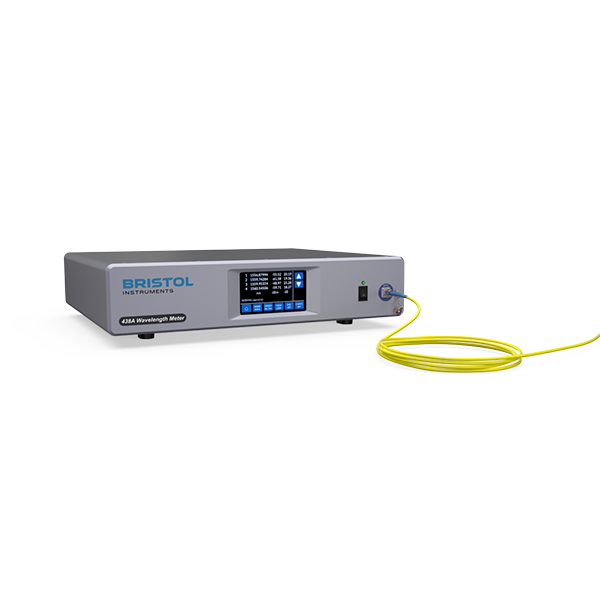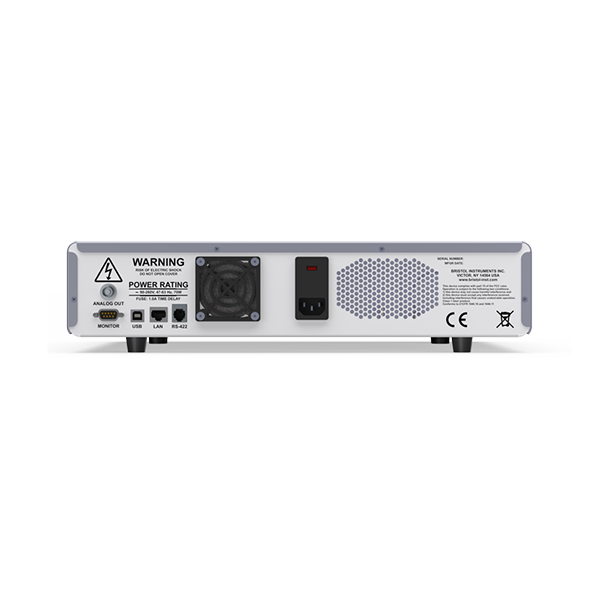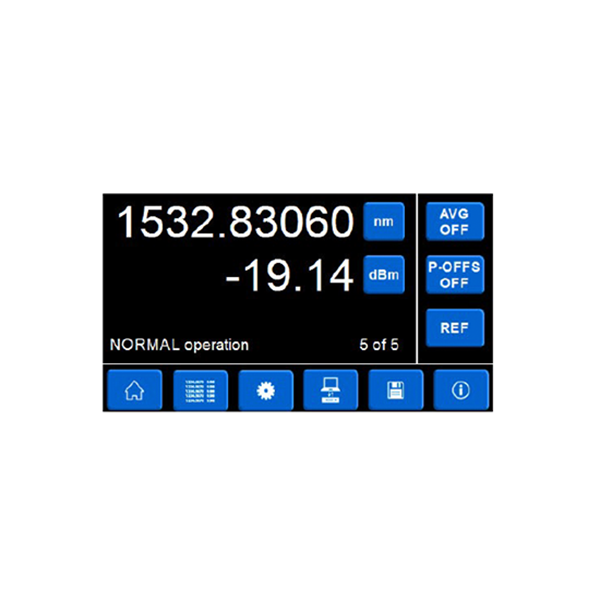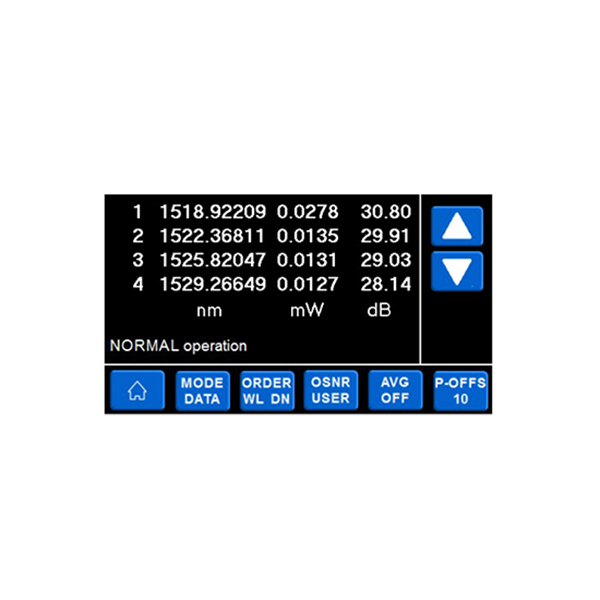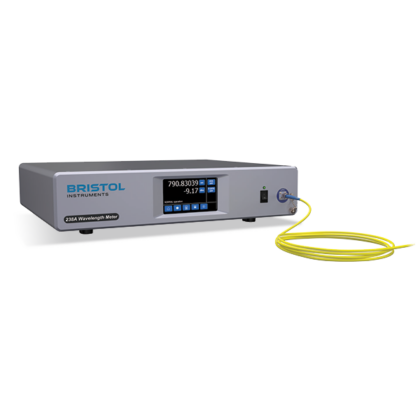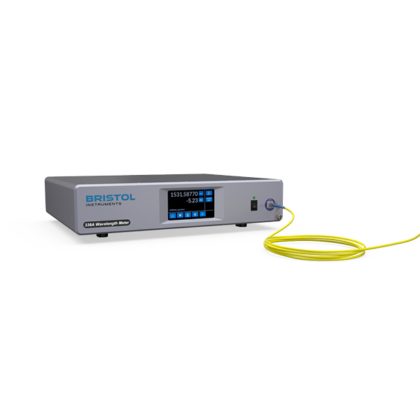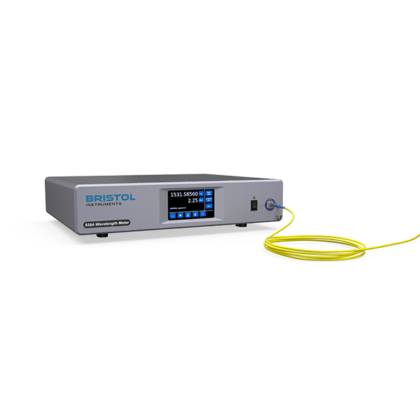The fastest multi-wavelength measurement available
438 Series Multi-Wavelength Meter
- Wavelength accuracy as high as ± 0.3 pm
- Continuous calibration with a built-in wavelength standard
- Measurement confidence level of ≥ 99.7%
- Power measured to an accuracy of ± 0.5 dB
- Automatically calculates OSNR to > 40 dB
- Automatic reporting of SMSR
- Fastest measurement rate of 10 Hz
- Broad operational range of 1000 nm to 1680 nm
- Operates with CW and modulated signals
- Convenient touch-screen display reports measurement data in a variety of formats
- Interfacing via SCPI using USB, Ethernet, or GPIB
- Rugged design for manufacturing environments
- Five-year warranty covers all parts and labour
The 438 Series Multi-Wavelength Meter from Bristol Instruments combines proven Michelson interferometer-based technology with fast Fourier transform analysis to measure the wavelength, power, and OSNR of as many as 1000 discrete optical signals.
With features such as high accuracy, measurement rate up to 10 Hz, and a broad operational range of 1000 to 1680 nm, the model 438 provides the most precise, efficient, and versatile wavelength testing of optical transceivers and WDM signals.
Reliable accuracy with continuous calibration
Continuous calibration with a built-in wavelength standard maintains the performance of the 438 Multi-Wavelength Meter over long periods of time. What’s more, every 438 system is rigorously tested with laser sources that are traceable to NIST standards.
Designed for convenience, built to last
Operation of the 438 Multi-Wavelength Meter is straightforward.
The optical signal enters the model 438 through an FC (UPC or APC) fibre optic connector on the front panel. The system’s high sensitivity results in an input power requirement as low as -40 dBm (0.1 µW). Automatic attenuation instantly adjusts the signal for optimum performance.
A convenient touch-screen display on the instrument’s front panel controls the 438 system and reports the measured wavelength, power and OSNR. Data from a specific optical channel can be displayed, or lists of data from all channels, sorted by wavelength or power, can be reported. The measurement information can also be sent to a PC using a library of SCPI commands via standard USB or Ethernet interface, or an optional GPIB interface.
Optical Spectrum Analyser software is also available to generate and display the spectrum of an optical signal to a resolution better than 10 GHz (0.08 nm). This provides the ability to analyse closely-spaced WDM channels and to determine the side-mode suppression ratio of optical transceivers.
The rugged design of the 438 Multi-Wavelength Meter provides long-term reliable operation that is backed by a five-year warranty covering all parts and labour.































